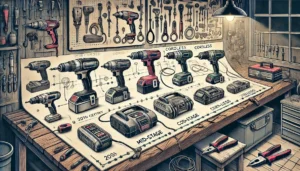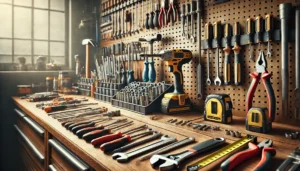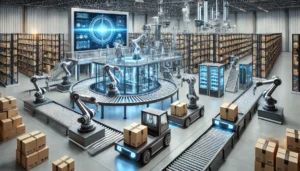Safety concerns rank highly among issues that must be taken care of in modern day working environments. It is the responsibility of the employers to provide employees with necessary safety tools and equipment to manage and minimize risks. Safety equipment and tools such as Personal Protective Equipment (PPE) and emergency tools for rescue make work environments safe and secure enabling employees to work efficiently. The following list presents an overview of ten crucial safety products relevant in today’s working environments.
1. Personal Protective Equipment (PPE)
This term refers to safety equipment that is worn for protection against very serious dangers. Each business with different disciplines has its set of PPE which work with the required level of safety for health to be attained.
- Hard Hats: Protect against head injuries from moving, falling, or flying objects. Highly relevant in construction and manufacturing sectors
- Safety Glasses And Face Shields: Protect eyes from particles, splash or chemical ejects and radiation from welding, chemical processes and laboratory work.
- Gloves: Protection of hands against cuts, burns, exposures to chemicals, and electric shocks depending on the type of work done.
- Protective Footwear: Steel-toe boots and shoes with anti-skid soles are preferred because they secure the feet from injuries and reduce occurrences of slips, trips, and falls.
- Hearing Protection: Earplugs and earmuffs protect workers from being exposed to noisome levels in factories, airports, and construction sites.
Using the appropriate PPE helps in complying with safety regulations and for the welfare of workers. Regular workplace risk evaluations are a must to provide the suitable PPE that minimizes the risks.
2. High visibility clothing
Hearing vests and jackets with high visibility are necessary for places where it may get obscured, like construction sites, warehouses, and road work. Such pieces of clothing help in preventing countless deaths and injuries when people are working near busy places such as roads where there are moving vehicles or busy working spaces with people and large heavy machines. The wearing of these clothing is even more critical during the night. All low visibility high-risk environments must have greatly enhanced clothing known as high-visibility clothing.
3. Respiratory Protection
Some workplaces have dust, fumes or chemicals that are airborne and need protection for the respiration system. Respirators and masks block the breathing of damaging elements and protect people from illnesses in the respiratory system.
- N95 Masks and Respirators: These masks are mainly required in the health care sector and industrial settings where there are great chances of inhaling airborne particles.
- Full-Face Respirators: Used in the painting and chemical manufacturing industries to guard the employees against chemical fumes, gases, and vapors.
Like any other type of PPE, respiratory protection has to be matched against particular hazards existing in a given workplace. Employees need to receive appropriate training on the care of masks/respirators.
4. Fall Protection Systems
Injuries from workplace falls are increasing in modern construction sights and warehouses. Be it a small family business or a corporate conglomerate, fall protection measures are a must. The following are pieces of equipment that help with fall prevention:
- Full Body Harnesses: Attaches to the worker to secure them to structures at height. In case of a fall, the employee is suspended mid air, thus avoiding a crash landing.
- Guardrails and Safety Nets: Workplaces commonly use safety barricades to prevent falls from a height. They are constant and let the worker perform his tasks safely.
- Lanyards and Lifelines: These devices allow elevated workers to perform their duties without risk of falling from their position.
Providing training for staff is just one of the many strategies that must be put in place to make workplaces as safe as possible. Remember that a well trained employee is an asset.
5. First Aid Kits
First aid kits are one of the many things that must be stationed in every business’s working area. Employees should be trained to use them in emergencies like cuts or burns. A good first aid kit must include:
- Bandages and gauze
- Antiseptics and disinfectants
- Pain relievers and burn ointments
- Scissors and tweezers
- Medical gloves
First aid kits should be put at the most frequented places in a workplace, while also being pampered frequently and restocked to avoid running out of essential pieces of equipment. It is important to have trained personnel during emergencies, as they can provide immediate assistance.
6. Emergency Eyewash Stations and Showers
It is a must to have safety showers and emergency eyewash stations available in places where chemicals are likely to be present. Their injuries caused by hazardous materials can be immediately dealt with. Eyewash stations in laboratories, chemical plants, and factories should be placed relatively close to parts of the workplace that deal with dangerous chemicals so that they can be reached in the case of an emergency.
7. Fire Safety Equipment
When there are sudden fire outbreaks, ice extinguishers, fire detectors, as well as fire blankets help prevent these situations from worsening. Additionally, businesses and other places of work need to adapt and follow fire safety rules which comprise the following:
- Employees should be able to easily reach fire extinguishers and know how to operate them.
- Smoke detectors and fire alarms must be routinely checked to ensure that they are working properly.
- Any escape routes or fire exits must be clearly displayed, identifiable, and accessible at all times.
Fire drills must be held periodically so that workers know how to get out of the building in the event of a fire.
8. Safety Signage and Labels
Safety signs and labels that are distinctly visible and readable as well as give direction assist the employees with instructions pertaining to the danger that may be present in a specific area. To avert mistakes, oversights, and accidents, handsets need to be used carefully in places that are known to be very dangerous. Examples of common safety signs are:
- Caution Signs: Indicate hazardous areas or potential risks, such as “Wet Floor” signs.
- Warning Labels: Highlight dangerous chemicals, machinery, or areas with restricted access.
- Emergency Exit Signs: Clearly mark escape routes in case of a fire or other emergencies.
The standard usage of safety signs enhances communication efficiency and safety in an organization for employees and people visiting the organization.
9. Special Tools and Equipment
Elimination of musculoskeletal disorders and increased employee productivity greatly depend on workplace ergonomics. Some of the ergonomic tools include:
- Workstations and chairs that have adjustable height.
- Anti-fatigue matting for workers who are required to stand for long periods of time.
- Seating with support, also known as lumbar support cushions.
By integrating an ergonomic approach in the workplace, employers can improve the productivity of employees while also decreasing the risk for injuries from repetitive straining.
10. Barriers and rails for protection
Barriers, guardrails, safety nets, and machine guards encompass the workplace to protect the workers from exposed areas and equipment which can be extremely harmful. Safety barriers assist in:
- Prevent accidental falls from elevated workstations.
- Restrict access to dangerous machinery and hazardous zones.
- Improve organization in warehouses and industrial facilities.
Barriers designed to improve safety conditions make certain that employees are protected against industrial machinery and vehicles within the site reducing work accidents.
The Role of Workplace Safety Equipment
By implementing these products, workplace accidents can be lessened and even avoided completely. Integrating training, servicing, and discipline policies can go a long way toward ensuring employee safety and health. Adopting a vigorous prevention strategy not only defends the worker’s health, but also increases organizational productivity by decreasing the time lost to injuries related to job tasks.
Conclusion
All types of work should incorporate safety techniques that protect workers from injuries. The minimum necessary protective measures and provisions range from personal protective equipment and uniformes to ergonomic utensils and fire prevention tools. The complexity and diversity of threats to employee health and workplace depend on how deeply employers and business owners think of preventative measures and how effective and safe the population they provide services for is.










